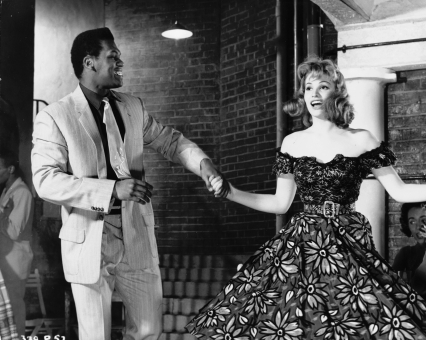Jim Crow Museum
1010 Campus Drive
Big Rapids, MI 49307
[email protected]
(231) 591-5873
Have you ever heard the term lily skin?
Diane Moncrieff
Birmingham, Alabama

Did you mean lily white? If so, I have heard that term many times. Often to mean a situation where there are no racial minorities, as in, “That is a lily white neighborhood” or “The college administration is lily white” or “That sorority is lily white.” If you meant lily skin, as a physical descriptor of a person’s skin color, then the answer is yes, I have heard the term, but only twice, and both times were a long time ago.
Many years ago I watched Sapphire, a 1959 crime drama set in London. In the film two white police officers investigate the murder of a pregnant woman. The woman has the appearance of a white person—and, initially her death is treated as the murder of a white woman. However, when her brown skin brother shows up at the police station it is clear that Sapphire was a multiracial woman doing what was commonly referred to as “passing for white.” In the movie, Sapphire and similarly hued women are referred to as being lily skin women. This is evident in this clip https://www.youtube.com/watch?v=NNxVPm6hFl4. There are many stereotypical portrayals in the film including the idea that multiracial women—with lily skin—impulsively break into dance when “they hear the beat of the bongo." It is hard to believe that such silliness was widely accepted in Europe and the United States. If you would like to watch the entire film, please visit https://www.youtube.com/watch?v=2vH-dkpBJdY.
There was a book published in 1960 called Lily-Skin Lover: his passion for light-complexioned women leads him to destruction. The main character is Rod Reed, a lust-driven, black man who has been married for thirteen years to a woman with dark skin. It is a violent story about the lengths that Reed—and by extension, black men—will go to be with a woman who looks white—and the devastation that will be caused by the pursuit. I suppose it is no worse than the thousands of other trash pulp that was produced in the early 1960s.
One final note: I have often heard it said that racial labels/names don’t go away—this is often said about the persistence of the word nigger in the culture. However, it is clear that there was a time when some multiracial people, especially women, were called lily skins. But, one does not hear that term anymore. The same is true of former racial slurs like Rastus and Ephraim. I believe the demise of these words is reason to be hopeful.
David Pilgrim
Diversity & Inclusion / Jim Crow Museum
2016